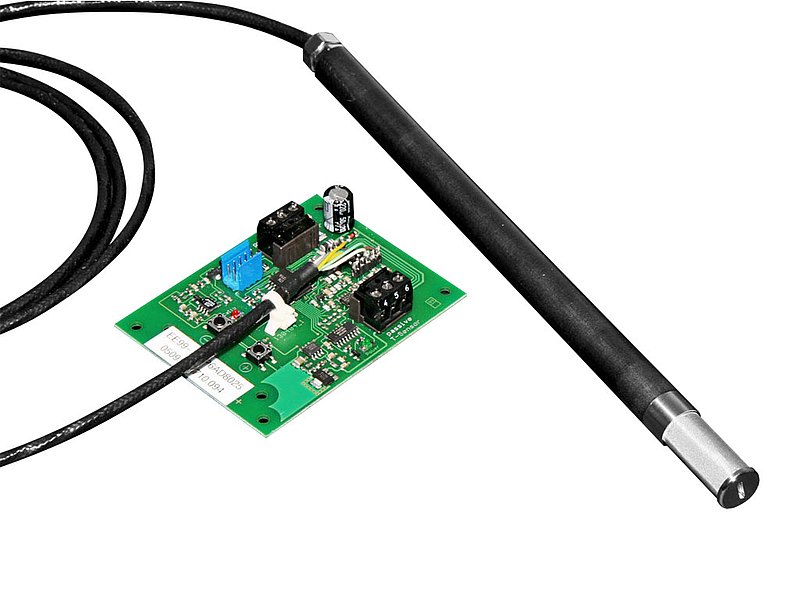Humidity and Temperature Module for OEM Applications

EE99-1
The EE99-1 employs high-end E+E humidity sensing elements manufactured in state-of-the-art thin film technology, which are the prerequisite for outstanding measurement accuracy.
With a working range from -50 °C (-94 °F) up to 180 °C (356 °F) and various probe and cable lengths the EE99-1 module is suitable for a wide range of applications.
The E+E proprietary coating protects the sensing elements against corrosive and electrically conductive pollution, which leads to excellent long-term stability even in harsh environment.
Applications
- environmental chambers
- climate chambers
- test chambers
- dryers and humidifiers
- incubators
Key Features
- highest measurement accuracy
- wide working range
- outstanding long term stability
- E+E proprietary coating against pollution and corrosion
- passive temperature sensor
- remote sensing probe up to 10m
- easy field calibration/adjustment
- easy installation and service
Technical data
- Measuring range
- 0...100% RH
-50...180°C (-58...356°F), short term up to 200°C (392°F) - Accuracy
- ±1.3% RH
T-passive (Pt100 DIN A or Pt1000 DIN A) - Outputs
- RH: 4-20mA (3-wire)
T: passive (3-wire connection) - Supply
- 10-35V DC or
10-28V AC
Downloads EE99-1
FAQ
Transmitter with "two-wire" technology receive the power from the process, and the signal is carried on return wire (closed current loop). With "three-wires" technology the power supply is separate from current output: 2 wires are the power supply and the third carries the signal.


